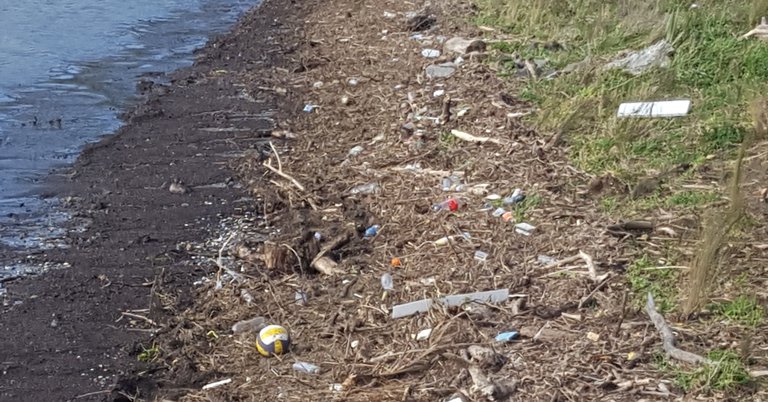


Porirua City Council Senior Advisor Harbour and Catchment Nigel Clarke, said the litter strewn across a stretch of beach completely cleared by the Aspiring Leaders’ was further proof of the need for the new programme.
The thousands of pieces of litter collected during a survey of Porirua’s harbour area is helping to shape a major new programme to tackle the problem of harbour pollution.
As part of their visit to Wellington for the Aspiring Leaders’ Forum, a group of 150 young people aged between 18 and 30 recently helped to collect and survey the amount of rubbish entering Te Awarua o Porirua Harbour.
Surveys were done along a section of coastline between Wineera Drive and the water, and a section of beach by the Pak’nSave supermarket.
Porirua City Council Senior Advisor Harbour and Catchment Nigel Clarke, said more than 3000 bits of rubbish were collected across the two survey sites.
“In just three hours we collected a total of 3258 pieces of rubbish at the two sites, with the vast majority being plastic food wrapping and beverage containers.
“There was also a surprising amount of resin pellets, housing construction waste and polystyrene beads, with the plastic collected ranging from zip ties and strapping bands all the way through to lollipop sticks, cotton buds and plastic cutlery.
“The sheer extent of plastic pollution found in the harbour is a significant problem.
“We are now using the data on what we collected to put together a comprehensive programme to tackle this problem, called Source to Sink.”
Clarke said the project would try to establish the main sources of litter, whether deliberately thrown away or due to poor waste disposal, and windblown into the storm water system, streams and harbour, so that they could target their efforts in stopping the litter at its source.
“The data we have gathered from these two surveys will play a crucial role in shaping that project, as the first step in stopping littering entering the harbour is finding out where it has come from.
“This data also gives us a ballpark figure of how much windblown litter is entering our harbour, a crucial step in addressing the issue.
“This project is also about changing behaviour, if we identify a particular retail or commercial business is a major source of rubbish, we want to help educate the owners of that business to change their ways.
“I would also encourage anyone in our community to pick up litter when they see it, and to remember we have 620 litter bins around the city, so let’s use them.”
Clarke said a significant indication of the amount of litter entering the harbour was the 388 tonnes collected by the Council every year.
“I think the total amount of rubbish hitting our harbour is significantly more than this figure.”
Full survey results are available at https://litterintelligence.org/data/survey?id=174 and https://litterintelligence.org/data/survey?id=177.
22 Jul 2019